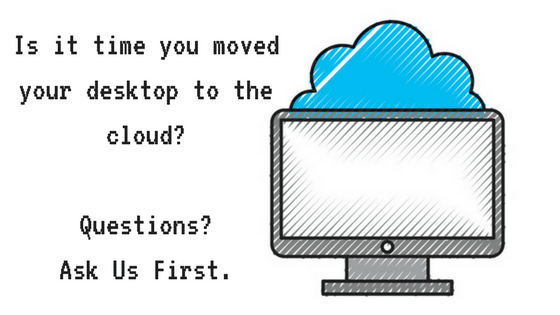Device management is an age-old headache and one that IT teams struggle with regularly. However, using DaaS (Device as a Service) can solve this problem and leverage organizational strengths while reducing costs.

Businesses of all sizes look for ways to leverage technology to create an edge over their competitors. However, this can challenge small to mid-sized businesses (SMBs). The rapid pace of change and the deeper pockets of larger organizations often leave SMBs competing with aging software and hardware and without the funds to replace them.
Fortunately, cloud-based software is now extending to devices. DaaS is growing in relevance and prominence in the SMB workplace. While procuring devices in a service model isn’t new, the term has been updated. Technology teams are adopting this concept and fully embracing the new opportunities this aged-old model offers.
The Challenges with Device Management
IT managers are familiar with the difficulties surrounding device management. Plus, it can cause frustration from the board room to individual workers for a variety of reasons:
- Cost: By the time IT managers get the funds needed for device upgrades, the technology is often outdated and needs to be researched again before a purchase can be made.
- Lack of flexibility: Buying devices in bulk is usually the most cost-effective option. Purchasing a bulk quantity of the same type of computer simplifies everything from purchasing to deployment and support. However, this doesn’t take into consideration the varying needs of workers.
- Slow upgrades: New employees coming online may have different requirements than those who received their computers only a few years ago. In this case, your IT team deals with multiple releases and platforms.
- Maintenance: Unsurprisingly, older hardware and software require more maintenance to run efficiently and effectively. As you near the end of your device life cycle, this problem will rise to the forefront and can be a huge productivity drain on your technology team.
- Device disposal: What do you do with used devices after they’ve been replaced with newer models? In the best-case scenario, you can sell them—However, this still requires the wiping of hard drives, removing passwords, and other precautions.
- Hardware inventory: Maintaining an accurate inventory of which devices are assigned to specific individuals can be a laborious task. Even the most organized of IT teams need to perform a bi-annual or annual inventory, and there are invariably surprises or missing devices that need to be tracked down. This problem is compounded if you provide each employee with tablets, mobile phones, desktops, and laptop computers.
With all of the challenges associated with device management, it’s no surprise that businesses are looking for other options.
The Business DaaS Model
Devices as a Service has been used to lease high-end office equipment such as printers and copiers. However, it’s now expanding to other devices as IT departments are being overtaxed and understaffed.
Outsourcing devices allows technology teams to focus on bringing value to the organization instead of spending time keeping things running. The hidden costs of poorly supported technology include everything from poor productivity due to slow operations to lost customer data and even reduced revenue levels.
IT teams may not realize their prospects and customers are jumping off their websites due to slow server connection speeds. Business leaders may not realize that the effectiveness of their customer service representatives is less than 50 percent due to slow computer connections.
Improved Security and Scalability
As cybercrime is on the rise and ransomware is running rampant throughout the business world, ensuring your network is completely secure is key. When your team has the latest hardware and software, you’re more likely to comply with accepted best practices for security, regulations, business continuity, and disaster recovery plans.
Scalability is a critical piece to consider as well. DaaS provides an easy way to scale up or down without incurring massive costs to add or depreciate equipment.
You’ll Receive Timely Updates
With DaaS, security patches, software updates, and hardware upgrades are performed regularly by individuals whose sole responsibility is to ensure they’re always up-to-date.
Ease of Management
Working with a DaaS vendor provides you and your IT team peace of mind. Your vendor will constantly review the current device structure for your business and handle device issues now and into the future.
Plus, your DaaS vendor can provide an analytics platform so you and your IT team can view employee performance and productivity throughout your organization.
When you research DaaS organizations, it’s important to remember that service levels can differ, with various price ranges depending on response times and update schedules.
Working with a DaaS vendor provides you and your team more time to focus on strategic initiatives that will promote your business success. They’ll manage your IT assets, device inventories, upgrade schedules and handle deployments—even the disposal of aging assets.
Want to learn more about Business DaaS for your organization in the {city}? Contact {company} at {phone} or {email}. Our professionals will work with you to find your business’s best device management options.
